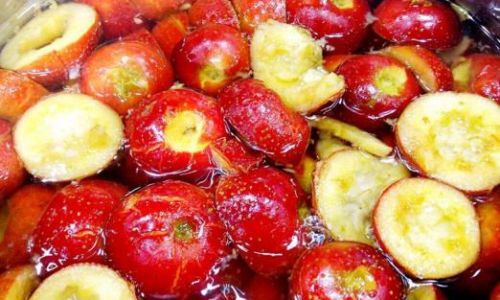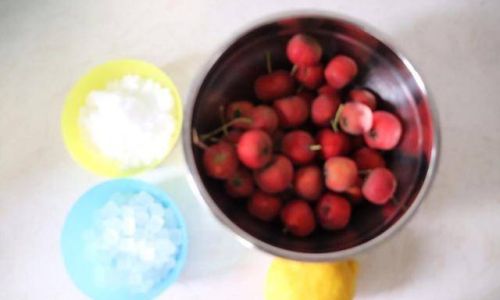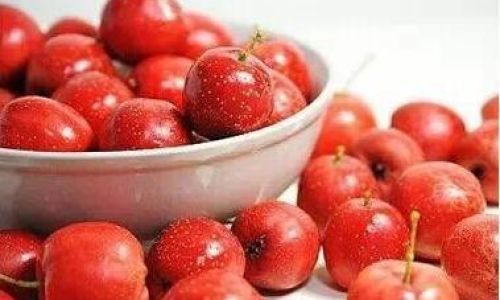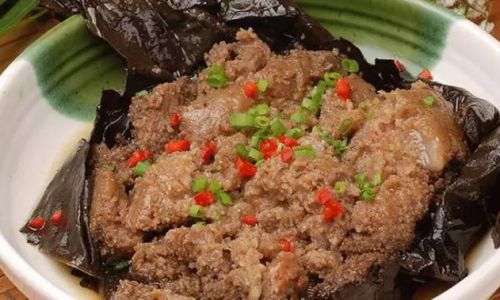Hawthorn berries, scientifically known as Crataegus, have long been celebrated for their vibrant hue, tart flavor, and myriad health benefits. Native to temperate regions across the Northern Hemisphere, these small, ruby-red fruits have woven themselves into culinary traditions, herbal medicine, and cultural folklore. Yet, for many, a persistent question lingers: Should hawthorn berries be peeled before consumption? This article delves into the anatomical structure of the hawthorn berry, its culinary applications, nutritional profile, and cultural practices to provide a comprehensive answer to this age-old debate.
Anatomy of the Hawthorn Berry
To address the peeling question, one must first understand the berry’s composition. A hawthorn berry is a pome fruit, meaning it has a fleshy exterior surrounding a central core containing seeds. The outer layer, or exocarp, is thin yet durable, often with a slightly waxy texture. Beneath this lies the mesocarp, the juicy, edible portion responsible for the berry’s tart-sweet taste. The innermost layer, the endocarp, encases the seeds, which are typically inedible due to their hard, woody structure.
Notably, the exocarp’s surface varies between species. Some hawthorn varieties have smooth skins, while others bear tiny hair-like structures called trichomes. These trichomes, while harmless, can impart a gritty texture or mild astringency, prompting some eaters to peel the fruit. However, in many cultivated varieties, these hairs are bred out, resulting in smoother, more palatable skins.
Culinary Applications: Peeled vs. Unpeeled
The decision to peel hawthorn berries often hinges on their intended use. In raw preparations, such as fresh salads or garnishes, the skin’s texture becomes more pronounced. Diners accustomed to softer fruits like strawberries or raspberries might find the hawthorn’s slightly leathery exocarp off-putting. In such cases, peeling can enhance the eating experience by exposing the tender mesocarp.

Conversely, cooking transforms the berry’s texture. When simmered into jams, jellies, or sauces, the heat softens the exocarp, rendering it barely noticeable. Similarly, dried hawthorn slices—a staple in traditional Chinese medicine and snacks—retain their skins, as the dehydration process concentrates flavors and textures harmoniously.
Cultural preferences also play a role. In East Asia, hawthorn is often candied or steeped in syrup, skin intact, to create treats like haw flakes or tanghulu (sugar-coated hawthorn on a stick). These preparations rely on the skin’s integrity to hold the fruit’s shape during cooking. In contrast, European recipes, such as hawthorn jelly or wine, may discard the skins post-cooking to achieve a smoother consistency.
Nutritional Considerations: Skin as a Powerhouse
From a nutritional standpoint, the hawthorn berry’s skin is a treasure trove of bioactive compounds. Studies highlight the exocarp’s richness in:
- Antioxidants: Flavonoids like quercetin and hyperoside, which combat oxidative stress.
- Dietary Fiber: Aids digestion and promotes gut health.
- Polyphenols: Linked to cardiovascular benefits and anti-inflammatory effects.
By peeling the berry, one risks discarding up to 30% of these beneficial compounds, according to a 2020 study published in the Journal of Agricultural and Food Chemistry. The skin acts as a natural reservoir for nutrients, making its retention advisable for health-conscious consumers.
However, individuals with sensitive stomachs or digestive issues may benefit from peeling, as the exocarp’s fiber content could exacerbate discomfort. Moderation, therefore, is key: enjoying small quantities of unpeeled hawthorn balances nutrient intake with digestive tolerance.

Historical and Cultural Perspectives
The hawthorn tree (Crataegus monogyna) holds sacred status in European folklore, symbolizing love, protection, and fertility. Ancient Greeks and Romans adorned wedding altars with hawthorn branches, while Celtic traditions associated the tree with the faerie realm. In these contexts, the berry’s edibility was secondary to its symbolic power, and peeling practices were rarely documented.
In contrast, Traditional Chinese Medicine (TCM) has long utilized hawthorn (Shān Zhā) for its digestive and cardiovascular benefits. TCM practitioners typically prescribe dried, unpeeled hawthorn, believing the skin enhances the fruit’s ability to regulate qi (vital energy) and dissolve stagnation. This holistic approach underscores the skin’s role in preserving the berry’s medicinal properties.
Practical Guide: Peeling Techniques and Tips
For those who prefer peeled hawthorn, the process requires patience and precision. Here’s a step-by-step method:
- Blanching: Submerge whole berries in boiling water for 30 seconds, then transfer to an ice bath. This loosens the skin.
- Scoring: Use a paring knife to make shallow cuts along the berry’s equator.
- Peeling: Gently squeeze the berry to release the flesh from the skin.
Alternatively, freeze whole berries for 2 hours; the expanded moisture will make the skin slip off easily.
Debunking Myths: Safety and Toxicity
A common misconception warns against consuming hawthorn skins due to alleged toxicity. However, scientific consensus confirms that all parts of the edible hawthorn species (C. monogyna, C. pinnatifida) are safe when consumed in moderation. The seeds, while non-toxic, contain cyanogenic glycosides, which can release trace amounts of cyanide if chewed. Thus, spitting out seeds—not peeling—is the critical safety step.

Modern Culinary Innovations
Contemporary chefs are reimagining hawthorn in avant-garde dishes, often retaining the skin for texture. For example:
- Hawthorn Sorbet: Blend unpeeled berries with honey and lemon juice, then churn for a tangy dessert.
- Hawthorn Vinegar: Ferment whole berries with apple cider vinegar to create a digestive tonic.
- Hawthorn Skin Crisps: Dehydrate thinly sliced, unpeeled berries for a crunchy garnish.
Environmental and Ethical Considerations
Peeling hawthorn generates organic waste, which can be composted but may deter eco-conscious consumers. Retaining the skin aligns with the “root-to-fruit” movement, minimizing waste and honoring the plant’s entirety.
Conclusion: A Matter of Preference and Purpose
The debate over peeling hawthorn berries ultimately hinges on context. For raw consumption or textural sensitivity, peeling may enhance enjoyment. For culinary traditions, nutritional pursuit, or environmental stewardship, leaving the skin intact is advisable. As with many culinary dilemmas, the answer lies in balance: savor the berry’s entirety when possible, but heed personal comfort and culinary goals.
Whether peeled or unpeeled, the hawthorn berry remains a symbol of nature’s bounty—a humble fruit that nourishes body, mind, and spirit alike.






0 comments